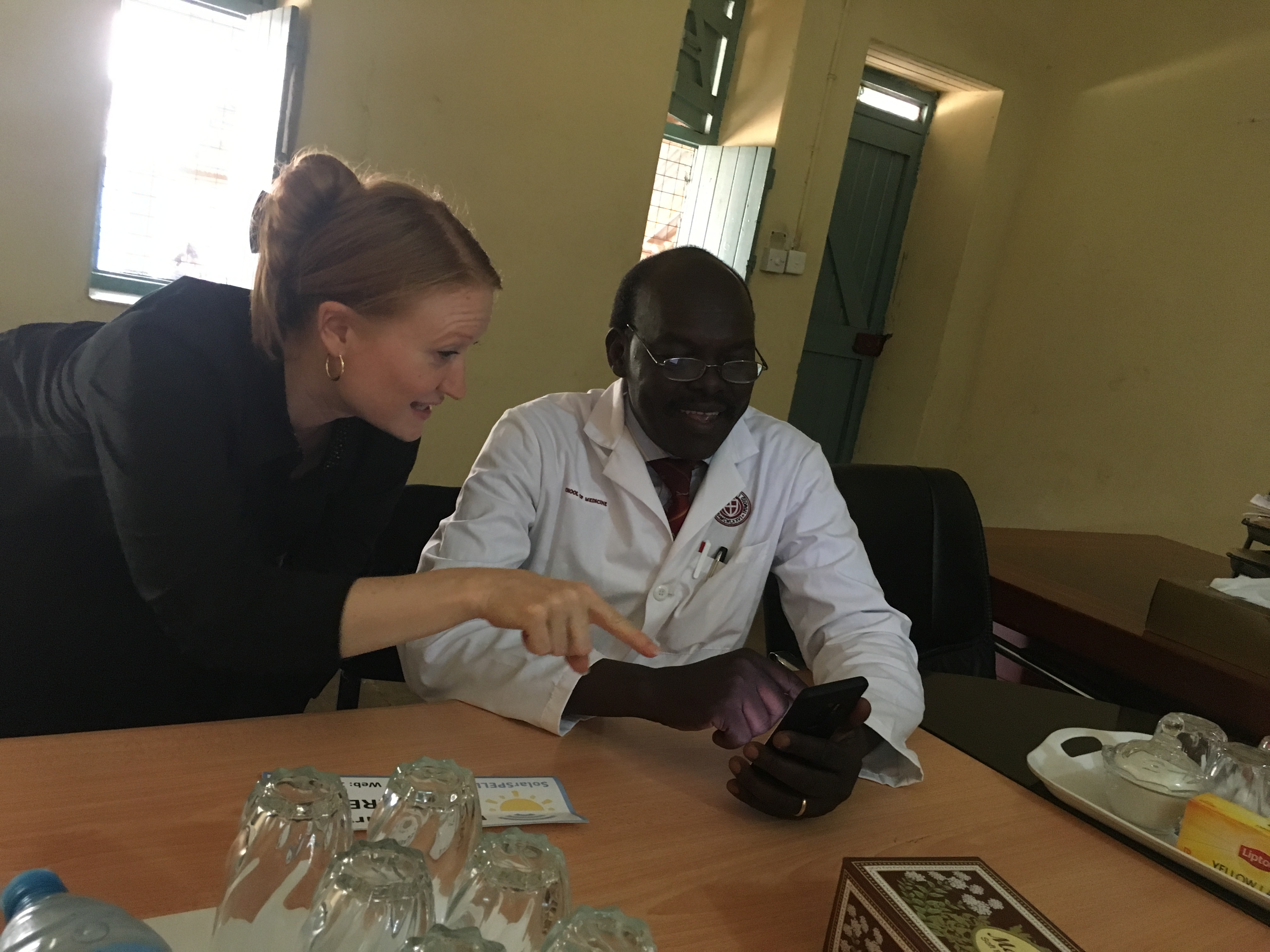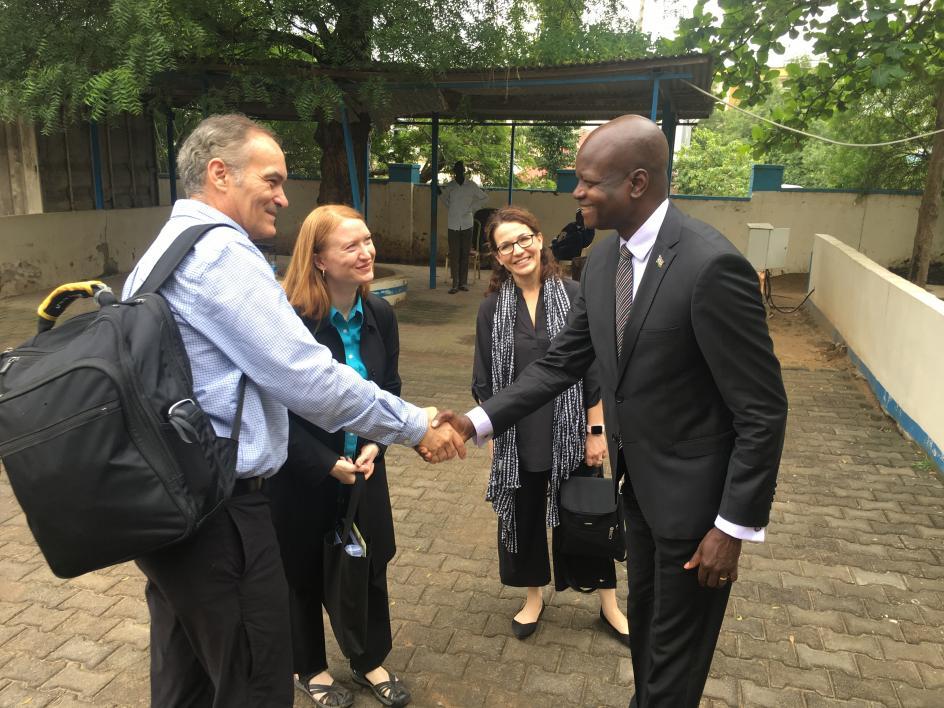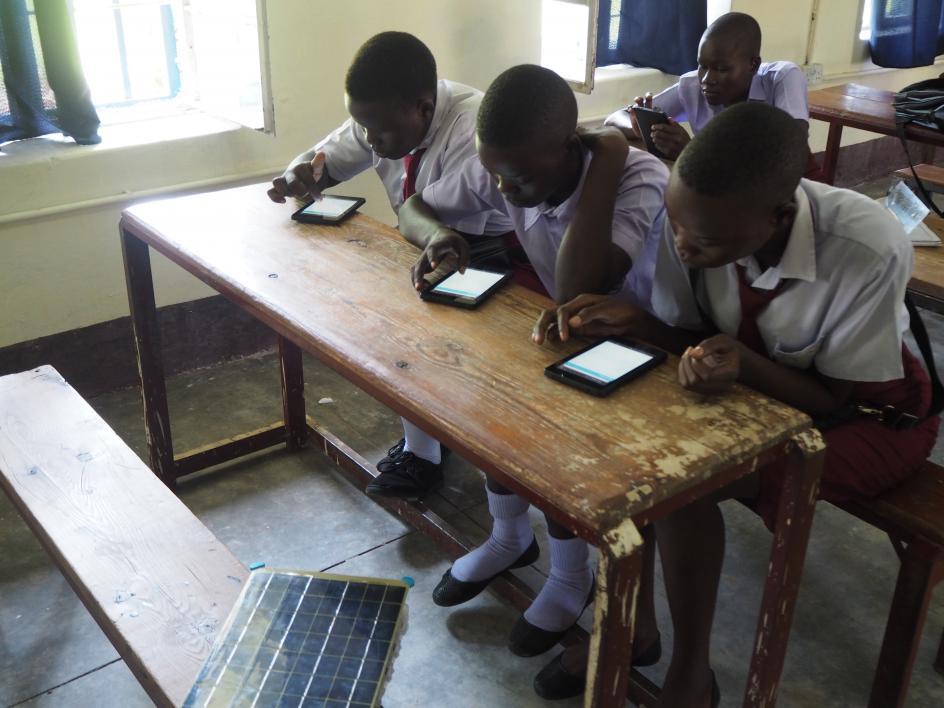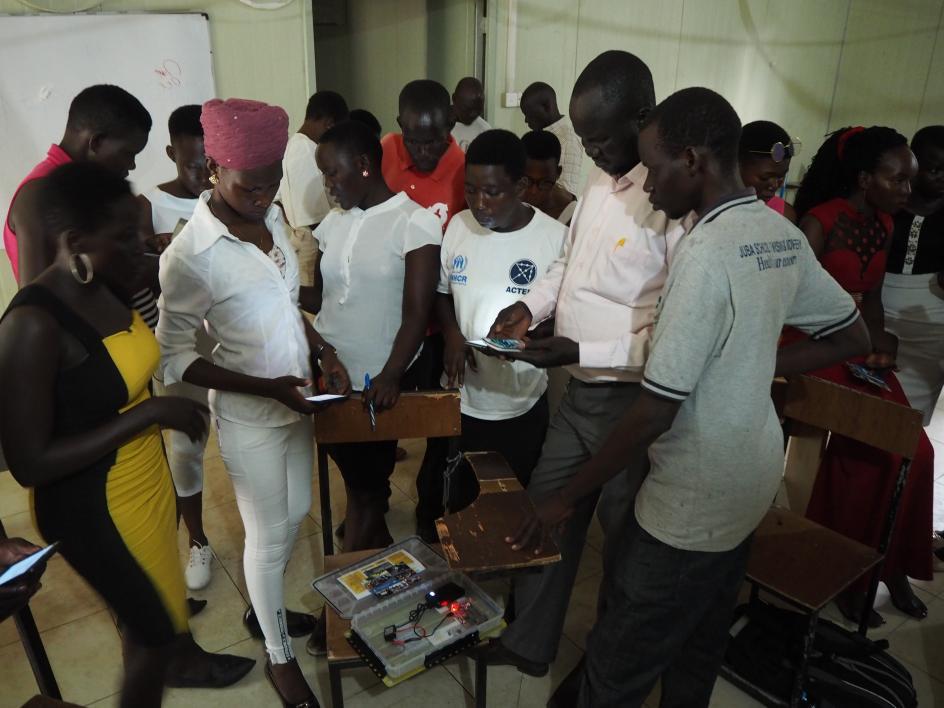In just five years, an Arizona State University student engineering project has grown into a global humanitarian mission that is now poised to transform the way health care is delivered.
SolarSPELL began when Laura Hosman, an associate professor in the School for the Future of Innovation in Society, challenged her engineering students to create a solar-powered library that would fit into a backpack. Now the initiative has distributed hundreds of digital libraries filled with educational resources to communities in nine countries that have limited or no internet connectivity.
“Over half the world’s population has never connected to the internet and has no internet access,” said Hosman, the co-founder and director of SolarSPELL, which stands for solar powered educational learning library.
And when there is internet, it’s not like in Western countries.
“They don’t have unlimited access. It’s slow, it’s on their phone and they pay for it by the byte.”
In those places, people don’t waste their few precious moments of connectivity on surfing the web.
“They use it for communication with loved ones,” said Hosman, who also is an associate professor in The Polytechnic School in the Ira A. Fulton Schools of Engineering and a senior sustainability scientist in the Julie Ann Wrigley Global Institute of Sustainability.
So they don’t even realize all of the educational opportunity that’s available online.
Laura Hosman giving a demo of the SolarSPELL library to Mayen M. Achiek, associate professor of surgery at the University of Juba. Photo by Hakim Monykuer Awuok
The genius of SolarSPELL is the incredibly simple and inexpensive design — the parts cost less than $200. It works this way: Each weatherproof, portable case, which fits into a backpack, includes a small solar panel and a voltage regulator that plugs into a battery that powers a Raspberry Pi microcomputer. A micro digital memory card plugs into the microcomputer. The card contains all of the digital library content and some code that allows it to be accessed by any type of browser. The device creates a Wi-Fi hot spot, so no electricity or internet connection is needed. Students then connect any Wi-Fi capable device, such as smartphones, tablets or laptops, to access and download the content. Some of the SolarSPELL devices include the tablets too.
The true value of SolarSPELL is the carefully curated content. Each memory card holds reading and math tutorials, science projects, health information or English lessons that are chosen specifically for each location. The content can be provided by the local community, drawn from open-source text and videos that are available for free on the internet or taken from textbooks that are used with permission.
When it started, the SolarSPELL devices distributed mostly primary and secondary school lessons, but then the program expanded to include other kinds of education.
• In the spring, Education for Humanity, an ASU initiative that provides higher education to refugee communities, started using SolarSPELL to deliver an agribusiness course to people in Uganda.
• In June, Tonto Creek Camp near Payson became SolarSPELL’s first Arizona implementation site with the official pilot launch of the AZ Natural Resources library. The young campers used their smartphones to access educational modules and outdoor STEM-related activities at the camp, which has limited internet access. Plans are underway for more SolarSPELL projects in remote areas of Arizona.
• Earlier this month, the SolarSPELL team traveled to South Sudan to open a new teacher-training center in Juba, the largest city, and also to discuss how to distribute health care information via the devices.
Heather Ross, a clinical assistant professor in the Edson College of Nursing and Health Innovation, was on the team that went to South Sudan, a country that was created in 2011 and has struggled with poverty and violence. Because the country has so few resources, there is no culture of practicing evidence-based medical care, she said. While medical guidelines exist, there is no way to distribute them to practitioners in the field, said Ross, who also is affiliated with the School for the Future of Innovation in Society.
“But South Sudan is the newest country in the world, so there is not a longstanding culture of ‘this is the way we always do things.’ There’s willingness to change,” she said.
“And they saw that SolarSPELL is a solution to getting the guidelines out to the field and getting the people in the field trained. So our project in the next 12 months is building that medical library.”
Making the content relevant to the local community is crucial. For example, medical guidelines say that for a slow heartbeat, a pacemaker should be implanted.
“But there is no way to get a pacemaker in South Sudan,” Ross said, so the content must reflect that.
ASU undergraduates and doctor of nursing practice students will be researching the best way to compile a medical library, finding the actual medical content and creating modules instructing people how to find and use the content.
Last year, teams of ASU nursing students visited the small Pacific island nation of Vanuatu to deliver specially curated health content to remote villages. One student realized that people there don’t have access to high blood pressure medicine, Ross said. So the student created a video describing why it’s important to watch salt intake and to exercise and quit smoking. She measured the community members’ blood pressure and found that it decreased four weeks after watching her video.
That’s why working directly in the field is a key component to SolarSPELL. Because the security situation in South Sudan is fragile, students did not accompany the SolarSPELL team earlier this month, but students have gone to other sites, including Tonga and Rwanda.
The SolarSPELL model is “train the trainers.” At each location, the SolarSPELL team trains teachers to teach with the libraries. Feedback and revision are important parts of the process, and during the recent trip to South Sudan, where the first devices were delivered a year ago in a pilot program, the teachers asked for updated textbooks and modules to help them navigate the content, according to Bruce Baikie, the co-founder and technical lead of SolarSPELL and adjunct faculty in the School for the Future of Innovation in Society.
The initiative is finding support.
“There was a surprise announcement during the Juba ceremony that the U.S. Embassy in South Sudan will pay for SolarSPELL to go into four schools,” Baikie said. That funding will cover the cost of the devices, teacher training, follow-up support and evaluation.
SolarSPELL also works closely with Peace Corps volunteers, who are already embedded into local communities. In August, the SolarSPELL team will take ASU students to Fiji, where they’ll roll out lessons on climate change to Peace Corps volunteers who work in remote areas, he said.The Fiji project came at the request of the Peace Corps director there, Hosman said.
“He told me that all the volunteers are teaching about nutrition and healthy living, but what they really need is information about climate change because half the people are living in villages that are already affected and the volunteers don’t know what to tell them,” she said.
“They needed content that was actionable and local to Fiji, and that’s exactly what we’re all about.”
As SolarSPELL expands, it needs more students. This summer, six interns are working full time on creating and curating content. This fall, engineering students will work on revising the portable case because the size of the tablets has changed. The program also is a good fit for students who are looking for applied projects or capstones, Hosman said. Every semester, there's a one-day session at the Polytechnic campus for volunteers to build the devices. And, of course, working in the field is invaluable.
“Going into the field, they not only see their classroom work come to fruition, but it also changes their lives in what they thought they could accomplish,” Hosman said.
“If they can already make a positive change in the world while they’re students, imagine what they can do with the rest of their lives.”
Top image: A student at Gabat Primary School in Juba, South Sudan, connects to the SolarSPELL library. Photo by Laura Hosman
More Science and technology

Breakthrough copper alloy achieves unprecedented high-temperature performance
A team of researchers from Arizona State University, the U.S. Army Research Laboratory, Lehigh University and Louisiana State University has developed a groundbreaking high-temperature copper alloy…

4 ASU researchers named senior members of the National Academy of Inventors
The National Academy of Inventors recently named four Arizona State University researchers as senior members to the prestigious organization.Professor Qiang Chen and associate professors Matthew…

Transforming Arizona’s highways for a smoother drive
Imagine you’re driving down a smooth stretch of road. Your tires have firm traction. There are no potholes you need to swerve to avoid. Your suspension feels responsive. You’re relaxed and focused on…






